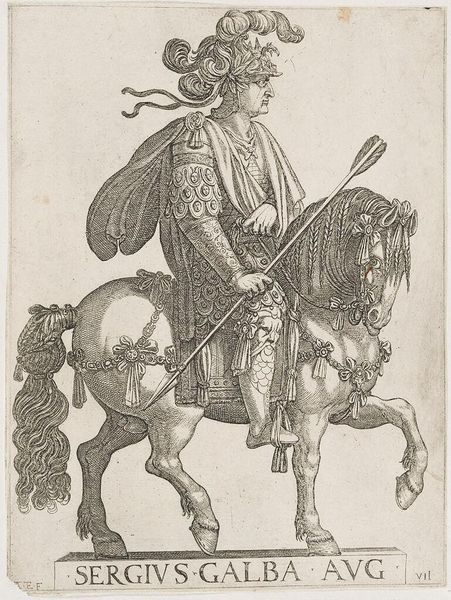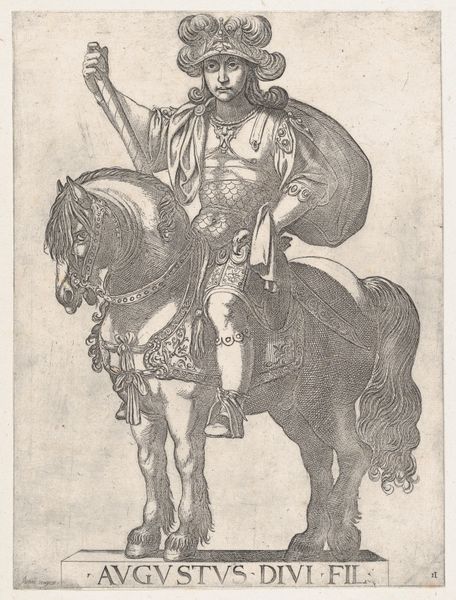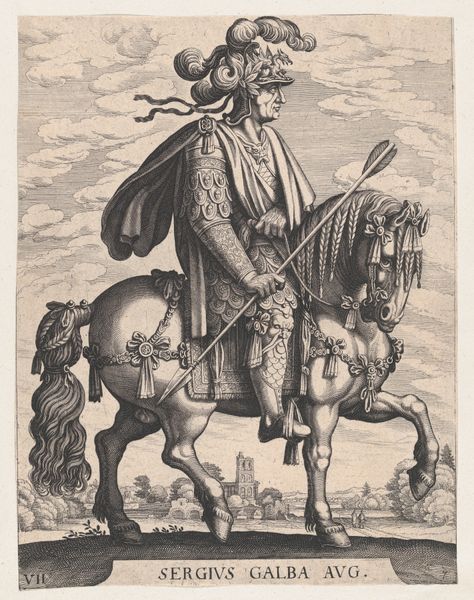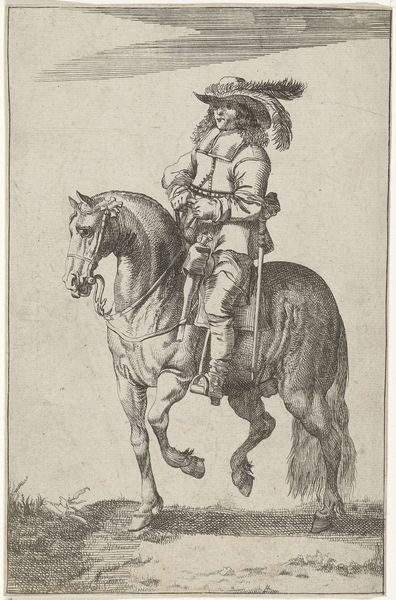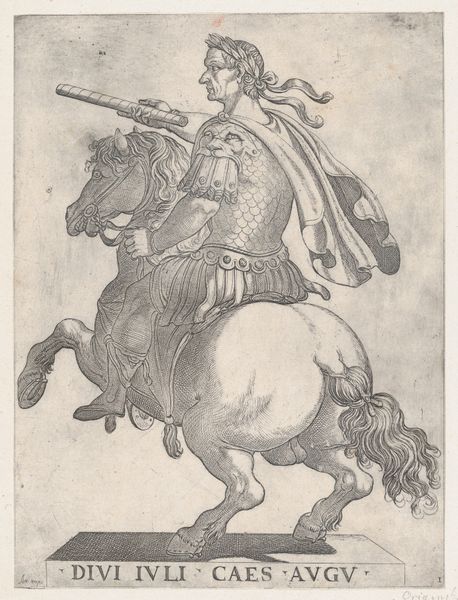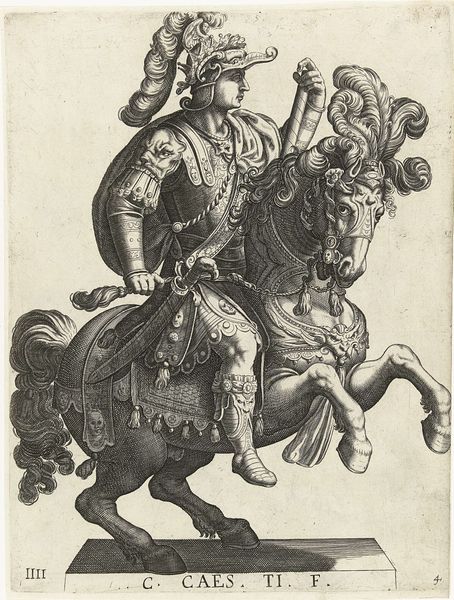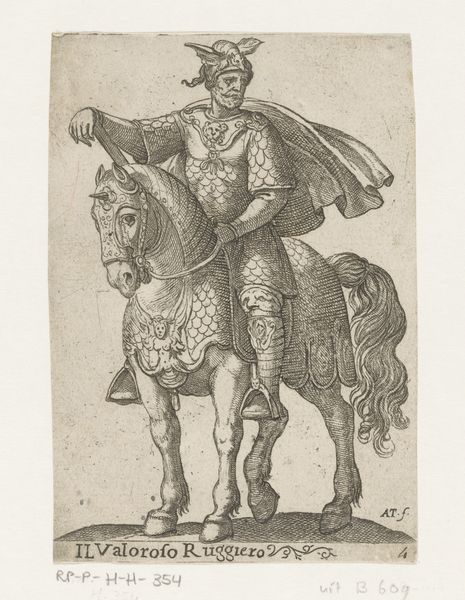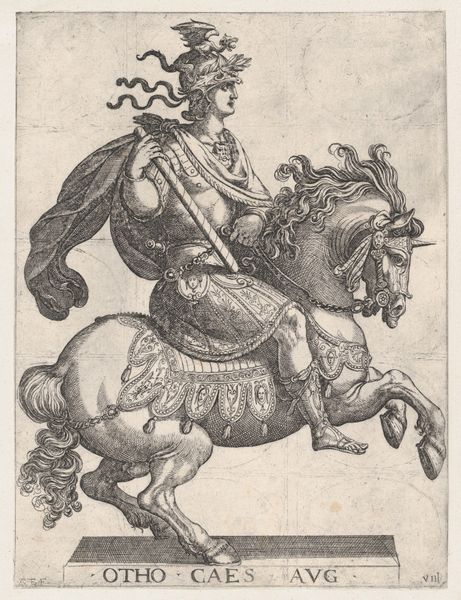
Plate 7: Emperor Galba on Horseback, from 'The First Twelve Roman Caesars' 1596
0:00
0:00
drawing, print, etching, engraving
#
portrait
#
drawing
# print
#
etching
#
figuration
#
romanesque
#
history-painting
#
italian-renaissance
#
engraving
Dimensions: Sheet: 12 in. × 8 7/8 in. (30.5 × 22.5 cm)
Copyright: Public Domain
Antonio Tempesta made this print of Emperor Galba on horseback using etching, a printmaking technique that relies on acid to ‘bite’ lines into a metal plate. Consider the process: the artist would have covered the plate with a waxy, acid-resistant ground, then drawn through it with a sharp needle. The plate was then submerged in acid, which would have eaten away at the exposed metal, leaving behind an incised line. This was a labor-intensive process, requiring skill and precision. Look closely, and you can see the accumulation of tiny, closely-worked lines that build up the image. These lines create shading and texture, bringing Galba and his horse to life. Prints like this were part of a booming visual culture, satisfying a hunger for images of power and history. They were made in multiples, and relatively cheap, meaning that people from different social strata could own them. The next time you look at a print, remember the hand-work that went into its making. The materials, the making, and the context are all inseparable from the artwork.
Comments
No comments
Be the first to comment and join the conversation on the ultimate creative platform.
